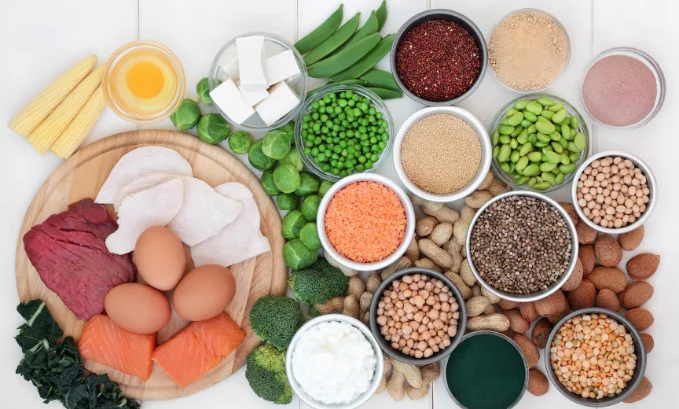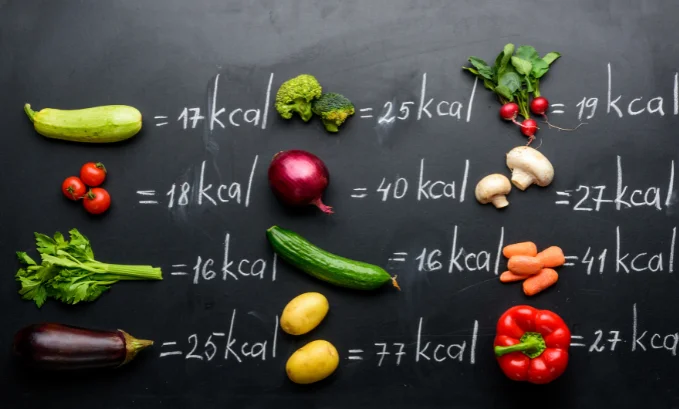
The following blog post is for entertainment and informational purposes only. It is not intended to provide medical advice or diagnosis. Please consult your doctor before making any health-related decisions.
Managing of type 2 diabetes management and weight loss are effectively realized with Tirzepatide. Regulation of blood sugar levels, controlling of appetite, and improvement of insulin sensitivity are achieved with this unique medicine. The usage of this compound can change the lives of some people. However, optimizing the foods you eat on Tirzepatide can maximize outcomes and lower possible undesirable events. Let’s acknowledge important critical dietary recommendations and incorporate the best foods to eat on Tirzepatide on your journey to achieving successful usage of this medicine intervention therapy.
Understanding How Tirzepatide Works
Primary you need to understand how this compound interacts with your organism.
Suppression of Appetite
Tirzepatide targets appetite-regulating hormones to reduce hunger. So, it makes it easier to control portion sizes and avoid overeating.
Delayed Emptying of Gastric
This compound decelerates the pace of exiting food from your stomach. This action facilitates the controlling of sugar amounts in the blood and enhances the duration of satiety.
Insulin Regulation
Tirzepatide enhances your organism’s insulin sensitivity. It fosters effective management of post-meal blood glucose levels.
“When I am on Tirzepatide what to eat?” – It’s a popular question of the users. Let’s start to seek an all-compassing answer.
Key Dietary Principles: What to Eat While on Tirzepatide
Give Preference to Foods with a High Nutrient Content

Often interest in “what to eat when on Tirzepatide” requires an understanding of the details of the compound performance. This effective drug significantly lowers the feeling of hunger. This performance can lead you to consume less food than usual. So, choosing whole foods with helpful nutrients rather than empty calories becomes vital for maintaining a balanced food plan.
Significant amounts of vitamins, minerals, fiber, and healthy fats feature this approach. These Tirzepatide foods to eat comprise bright vegetables, lean protein sources such as poultry or fish, unrefined grains like oats or brown rice along with nuts and seeds rich in nutrients alongside good-for-you oils derived from plants like avocado oil.
By making these nourishing options your top priority, you encourage essential bodily functions while also increasing energy levels promoting overall optimal health by avoiding malnutrition or deficiencies. Due to eating less than before each meal should serve towards meeting daily nutritional requirements.
Incorporating these best foods to eat on Tirzepatide maintains muscle mass, supports immune functionality, and ensures your full satisfaction for longer periods. All these results align with the medicine’s goal of enhancing weight management and controlling blood sugar levels.
Control Intake of Carbohydrates
Managing the intake of carbohydrates helps to achieve effective utilization of Tirzepatide in controlling diabetes and promoting weight loss. This compound advances insulin sensitivity and regulates glucose metabolism on its own. So, regulating your intake of carbohydrates can further augment these advantages.
Consuming whole grains, non-starchy veggies, and legumes helps to avoid sudden blood sugar spikes and prevents overloading your system with quickly digestible carbs. These foods gradually release glucose into the bloodstream. This effect promotes consistent energy levels and can minimize the threat of insulin resistance.
What not to eat on Tirzepatide? – medical experts often put your attention on this issue.
To optimize Tirzepatide’s blood sugar-regulating effects, it is crucial to minimize or steer clear of white bread, baked goods, and sweet snacks because they trigger abrupt increases in glucose levels. Instead, opt for whole grains rich in fiber as they provide consistent energy while enhancing satiety – a valuable attribute that complements the medication’s appetite-suppressing characteristics. Combining your carbohydrate consumption with protein and healthy fats fosters a more wholesome diet allowing better weight management and metabolic health balance.
Incorporate Lean Protein

When taking Tirzepatide, it’s important to follow the dietary principle of including lean proteins. They are necessary for maintaining muscle mass and metabolism while also promoting satiety. Though this medication reduces appetite and digestion rate, consuming lean proteins extendedly curbs hunger which coincides with its aim of managing weight loss by reducing cravings.
Lean proteins are a great choice for weight management due to their reduced levels of fat and calories in comparison to other protein sources. Turkey, fish, tofu, eggs, legumes, or chicken breast can be opted. The best foods to eat on Tirzepatide contain high amounts of protein. This not only supports muscle repair and growth. These foods contain essential amino acids. These ingredients help with immune response or hormone production within the organism.
Including lean proteins in your meals can effectively stabilize blood sugar levels. Such a food plan slows down the digestion of carbohydrates and reduces post-meal glucose spikes. Incorporating them with Tirzepatide becomes even more beneficial. Optimizing your food ration for better energy balance, improved metabolic rate, and advanced general health with this drug’s intervention requires entering lean proteins into every meal.
Avoid Feeling Thirsty
Developing the habit of staying hydrated can prevent the Tirzepatide dehydration event. You must regularly consume plenty of water throughout the day. Additionally, herbal teas, infused waters, and broths are good alternatives to consider as well – especially since your decreased appetite could lead to forgetting about drinking fluids altogether.
What to Eat on Tirzepatide
The answer to this usual question lies in choosing nutrient-rich and well-balanced foods. This ratio enhances the medicine’s ability to regulate appetite, manage blood sugar levels, and promote weight loss. Tirzepatide curbs your hunger pangs and slows down digestion processes. So, putting a spotlight on food quality becomes crucial. To help guide you in shaping your diet for optimal results with this drug therapy, medical service specialists give an overview of essential priorities worth considering.
What Not to Eat on Tirzepatide

To maximize the benefits of Tirzepatide in managing blood sugar, promoting weight loss, and controlling appetite, it is vital to avoid certain foods. These include those that impede insulin regulation or increase hunger sensations counteracting the medication’s effects. Let’s know about some food items and drinks you need to restrict or entirely eliminate from your diet plan.
Processed Sugars
The consumption of processed carbohydrates results in abrupt increases in blood sugar levels. This food triggers insulin spikes and leads to a crash. It features by fast digestion rate. So, these high-GI foods can prompt hunger soon after ingestion. Such action undermines the appetite-suppressing outcomes of Tirzepatide.
Sugary Beverages
Consuming sugary beverages can lead to sudden increases in blood sugar levels. They foster the intake of calories from nutrients. Such drinks can counteract the effects of Tirzepatide for weight reduction and regulation of blood glucose because these liquid drinks do not induce satiety.
Fried and Processed Foods
Unhealthy fats, calories, and sodium levels dominate in fried and processed foods. These food items can lead to the appearance of inflammatory processes in the organism, and weight gain and slow down the progress of your weight loss journey.
Snacks with Sugar
Such food provides a rapid burst of glucose to the bloodstream. This sudden rise triggers an increase in insulin levels. They lack essential nutrients and are known to be calorie-heavy. So, such snacks hinder Tirzepatide’s efficiency in regulating sugar in the blood and satiating hunger pangs.
Alcohol
The consumption of alcohol can result in the intake of calories. It also lacks nutrients and causes disturbances to blood sugar levels. It may also hinder decision-making abilities and can lead to overindulgence or unhealthy dietary selections. Moreover, drinking alcohol impacts liver functionality.
Fatty Dairy and Rich Fats
Weight loss may slow down in cases of consuming fatty dairy and rich-fat foods. Such fats can elevate cholesterol levels. This effect increases the threat of heart disease. This condition presents a significant concern for those managing type 2 diabetes.
So, what not to eat on Tirzepatide? You can optimize the efficiency of this compound by steering clear of processed carbohydrates, sugary drinks, fried foods, sugar snacks, and alcohol. Decreasing or completely eliminating these items from your diet while taking Tirzepatide ensures improved blood sugar regulation alongside enhanced weight reduction which evidently results in overall better health.
To maximize the benefits of this unique compound and reach your health objectives, people must understand what to eat while taking Tirzepatide. They must follow a well-rounded diet with essential useful substances.
People usually seek the answer to the question “How Many Calories Should I Eat on Tirzepatide? “
The amount of calories you require is determined by your existing weight, level of activity, metabolic rate, and objectives for shedding pounds. Tirzepatide aids in reducing calorie intake effortlessly.
How to Eat on Tirzepatide?

To maintain a healthy eating regimen while on Tirzepatide, it is recommended that you reduce your daily calorie consumption by 500-1000 calories. This method can efficiently aid in shedding weight at the rate of 1-2 pounds per week without fluctuations.
Working with a medical service specialist can provide a tailored plan. This ensures your caloric intake and supports your Tirzepatide treatment goals.
What to eat when taking Tirzepatide? The answer to this question lies in the following recommendations. You need to prioritize whole foods, regulate carb intake, and incorporate sufficient amounts of protein and healthy fats in your meals. You must pay attention to portion size, stay hydrated with adequate water consumption, and steer clear from sugary or processed food for sustained progress to optimal health outcomes.







